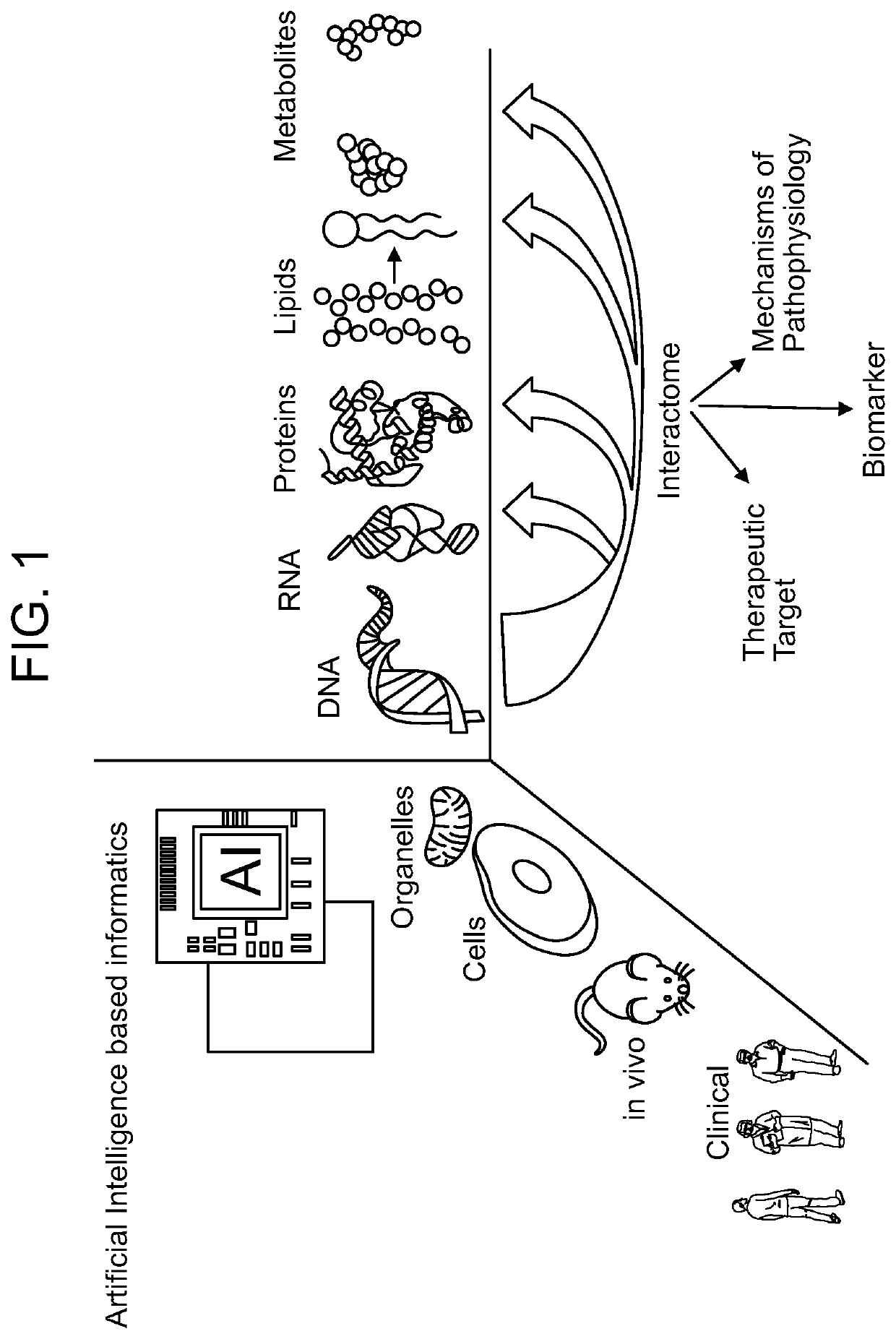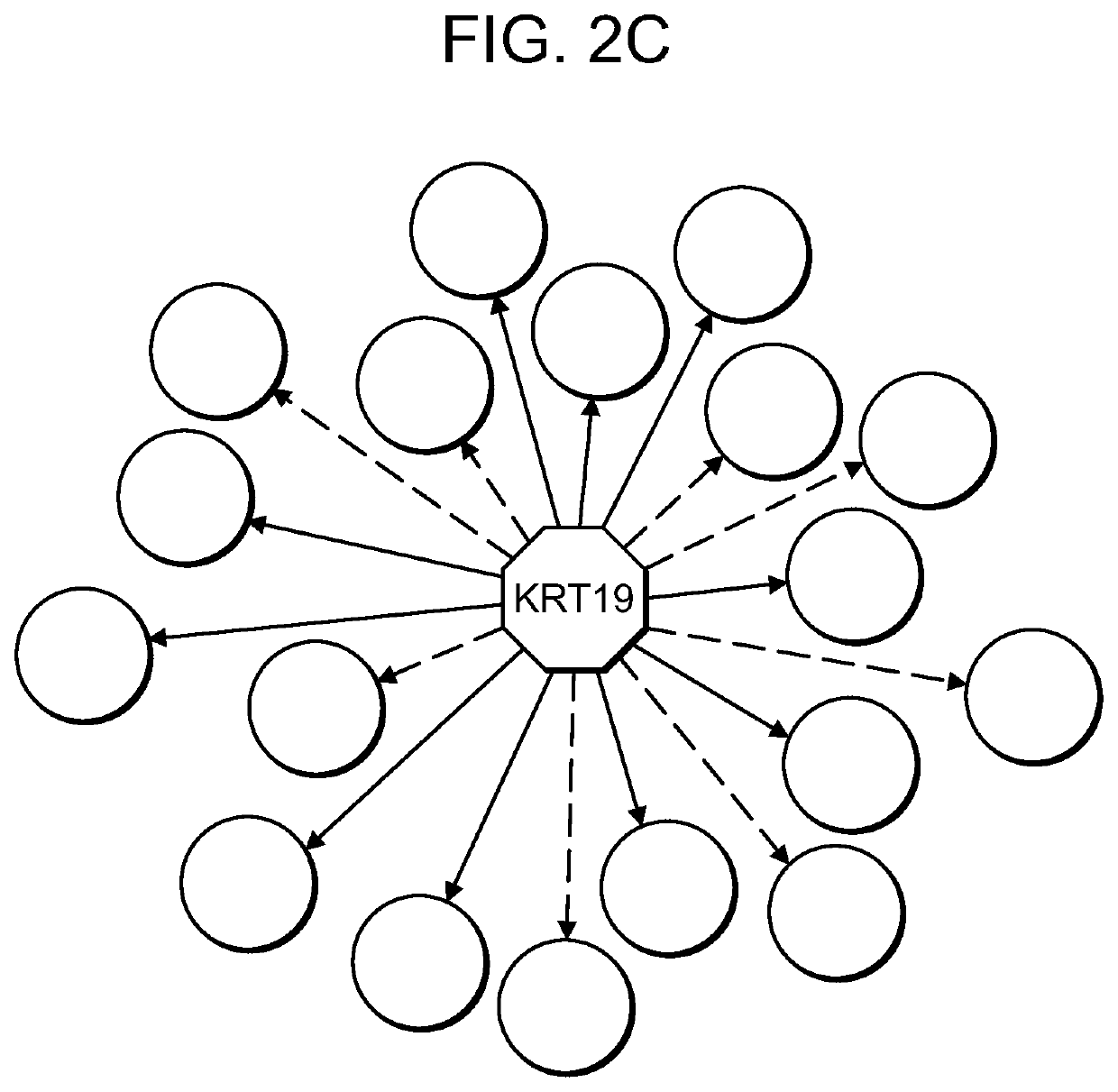Use of markers including filamin A in the diagnosis and treatment of prostate cancer
a technology of prostate cancer and markers, applied in the direction of biochemistry apparatus and processes, instruments, drug compositions, etc., can solve the problems of erectile dysfunction, difficulty in urinating, problems during sexual intercourse, etc., to improve the management of appropriate therapies, improve the survival rate, and improve the effect of accurate and rapid molecular diagnosis
- Summary
- Abstract
- Description
- Claims
- Application Information
AI Technical Summary
Benefits of technology
Problems solved by technology
Method used
Image
Examples
example 1
ation of Keratins and Tubulin as Prostate Cancer Markers
[0602]Extracellular Keratins are known to influence the cell proliferation and metastasis of epithelial derived prostate cancers. Androgen refractory prostate cancers exhibit differential expression keratin 8 (K8) when compared to normal tissue. Modulation and degradation of keratins is in turn mediated by mitochondrial generation of Reactive Oxygen Species (ROS). Despite these advances a systematic approach to understanding of keratins and other EC proteins in prostate cancer metastasis and proliferation is lacking.
[0603]An interrogative systems biology based discovery platform (i.e., Interrogative Platform Technology or a.k.a. Interrogative Biology™) disclosed in WO2012119129 (incorporated herein by reference), and shown schematically in FIG. 1, provides new mechanistic insights into understanding mitochondrial role in behavior of prostate cancer cells. The discovery platform involves discovery across a hierarchy of systems i...
example 2
ation of Filamin B as a Prostate Cancer Marker
[0609]An interrogative systems biology based discovery platform (i.e., Interrogative Platform Technology or a.k.a. Interrogative Biology™) was used to obtain mechanistic insights into understanding the mitochondrial role in behavior of prostate cancer cells. The Platform technology, which is described in detail in WO2012119129, involves discovery across a hierarchy of systems including in vitro human cell based models and human serum samples from prostate cancer patients and downstream data integration and mathematical modeling employing an Artificial Intelligence (AI) based informatics module.
[0610]The results provided in this Example demonstrate the modulation of filamin B and LY9, and the potential causal association in androgen refractory prostate cancer that was inferred using the Platform technology. The Example provides potential mechanisms of filamin B and LY9 regulation in response to modulation of mitochondrial function that wa...
example 3
n of Filamin B as a Prostate Cancer Marker in Human Samples
[0613]Having identified filamin B as a prostate cancer marker using the platform technology, human serum samples from normal subjects and subjects with prostate cancer were used to confirm filamin B as a prostate cancer marker.
[0614]Specifically, human serum samples were procured from a commercial vendor that sources human serum. Twenty samples were from normal donors and 20 samples were from patients diagnosed with prostate cancer. Prostate cancer samples were from patients with different prognosis and aggressiveness of cancers reported. Clinical characteristics of the subjects are provided in the table.
[0615]
Prostate CancerControl GroupMedian Age61 (47-86)58 (45-72)EthnicityCaucasian75%85%African American15%10%Hispanic10% 5%Tumor StageStage I20%Stage II35%Stage III 5%Stage IV40%
[0616]Commercially available ELISA tests for filamin B and PSA were procured from commercial source. The assays were performed using the manufactur...
PUM
| Property | Measurement | Unit |
|---|---|---|
| PSA | aaaaa | aaaaa |
| mass spectrometry | aaaaa | aaaaa |
Abstract
Description
Claims
Application Information
 Login to View More
Login to View More - R&D
- Intellectual Property
- Life Sciences
- Materials
- Tech Scout
- Unparalleled Data Quality
- Higher Quality Content
- 60% Fewer Hallucinations
Browse by: Latest US Patents, China's latest patents, Technical Efficacy Thesaurus, Application Domain, Technology Topic, Popular Technical Reports.
© 2025 PatSnap. All rights reserved.Legal|Privacy policy|Modern Slavery Act Transparency Statement|Sitemap|About US| Contact US: help@patsnap.com



